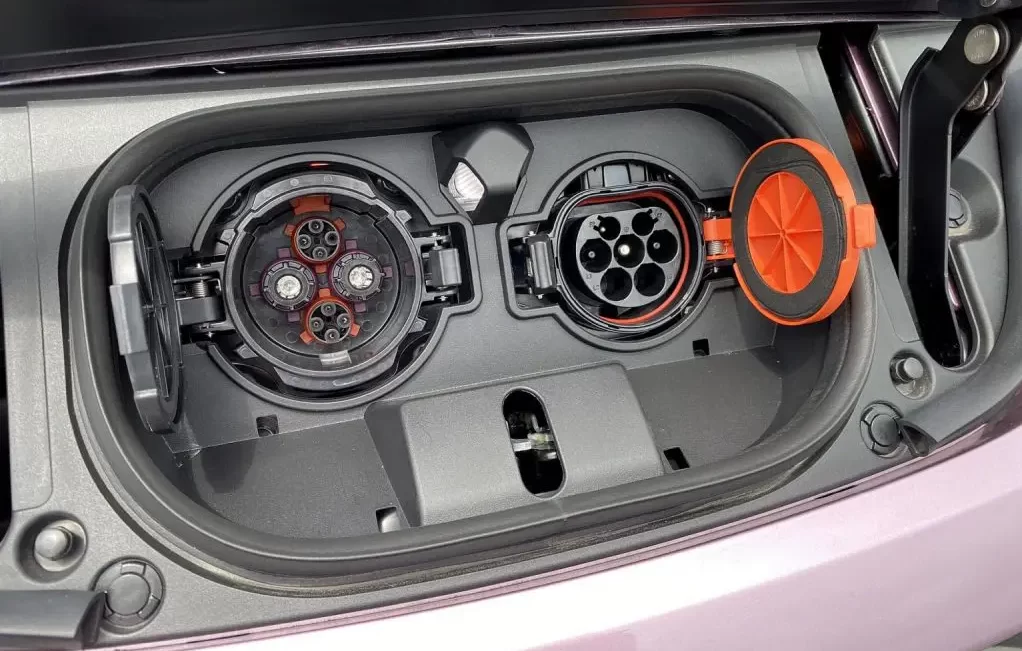If you are looking for an electric vehicle (EV) that can use the CHAdeMO standard charging port, you might be wondering which models are compatible with this fast-charging system. In this article, we will explain what CHAdeMO is, how it works, and which vehicles can use it.
What is CHAdeMO?
CHAdeMO is a fast-charging system for battery electric vehicles, developed in 2010 by the CHAdeMO Association, formed by the Tokyo Electric Power Company and five major Japanese automakers. 1 The name is an abbreviation of “CHArge de MOve” (which the organization translates as “charge for moving”) and is derived from the Japanese phrase “o CHA deMO ikaga desuka” (お茶でもいかがですか), translating to English as “How about a cup of tea?”, referring to the time it would take to charge a car.
CHAdeMO competes with other fast-charging standards, such as the Combined Charging System (CCS), Tesla’s North American Charging Standard (NACS), and China’s GB/T charging standard.
As of 2022, CHAdeMO remains popular in Japan, but is being equipped on very few new cars sold in North America or Europe.
How does CHAdeMO work?
CHAdeMO uses a proprietary electrical connector that delivers direct current (DC) to the battery of the EV, bypassing the onboard charger. This allows for faster charging times than using alternating current (AC) from a regular wall socket or a Level 2 charger.
The first-generation CHAdeMO connectors can deliver up to 62.5 kW by 500 V, 125 A DC, adding about 120 kilometres (75 mi) of range in a half an hour. The second-generation specification allows for up to 400 kW by 1 kV, 400 A DC, enabling even faster charging speeds and longer ranges. The CHAdeMO Association is currently co-developing with China Electricity Council (CEC) the third-generation standard with the working name of “ChaoJi” that aims to deliver 900 kW.
CHAdeMO also supports bi-directional charging, which means that the EV can not only receive power from the charger, but also send power back to the grid or another device.
This can enable smart grid applications, such as vehicle-to-grid (V2G), vehicle-to-home (V2H), or vehicle-to-vehicle (V2V) services.
Which vehicles use CHAdeMO?
CHAdeMO is mainly used by Japanese EVs, such as the Nissan Leaf, Lexus UX 300e, Mitsubishi Outlander PHEV, Toyota Prius Plug-In, and Nissan e-NV200. Some other models that can use CHAdeMO are the Kia Soul EV Mk1, Citroen Berlingo Electric Mk1, and the platform-sharing Mitsubishi i-MiEV, Peugeot iOn and Citroen C-Zero.
Tesla Model S and Model X can also use CHAdeMO with an adapter that connects to their proprietary NACS port. However, Tesla has stopped selling this adapter in 2021 and has not announced any plans to support CHAdeMO on its newer models.
Most European and American EVs use CCS as their preferred fast-charging standard, which has a different connector shape and protocol than CHAdeMO. Some charging stations have both CHAdeMO and CCS connectors available, but some only have one or the other.
Therefore, it is important to check the compatibility of your EV and the charger before plugging in.
Where can I find CHAdeMO chargers?
There are over 35,000 CHAdeMO chargers worldwide as of September 2021, according to the CHAdeMO Association. Most of them are located in Japan, followed by Europe and North America. You can find a map of CHAdeMO chargers on their website or use other apps or websites that list EV charging stations near you.
Conclusion
CHAdeMO is a fast-charging system for EVs that offers high power output and bi-directional capability. It is mainly used by Japanese EVs and some other models that have an adapter.
However, it faces competition from other fast-charging standards that are more widely adopted in other regions. If you are interested in buying an EV that can use CHAdeMO, make sure you check the availability and compatibility of chargers in your area.

